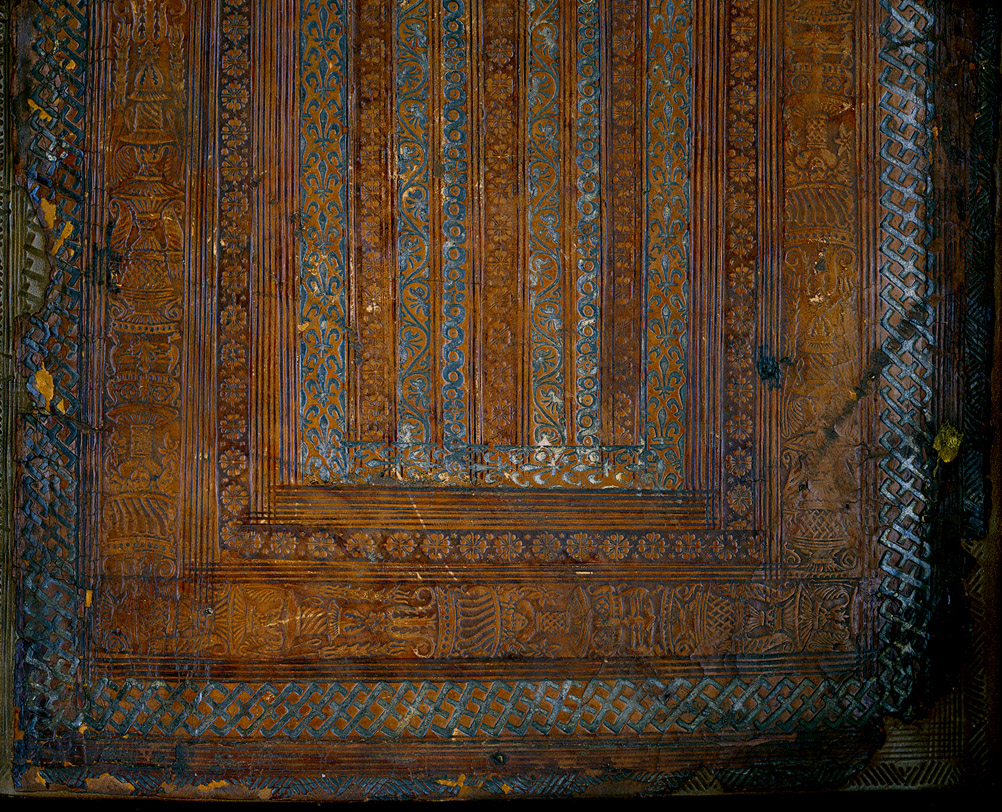

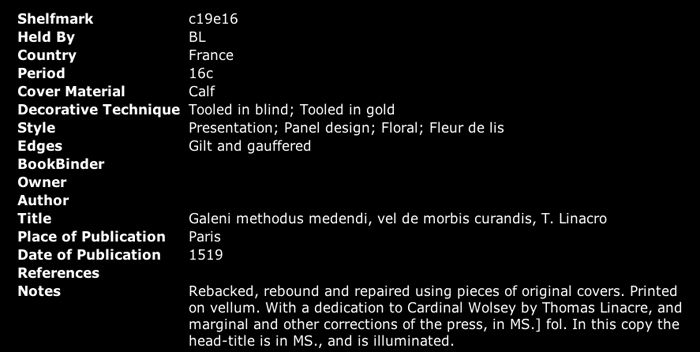
| Probably there is not a more important or fascinating set of decorated bookbindings (as related to the atelier Louis XII) than those of Thomas Linacre, a classical scholar and Henry VIII's physician. In 1519 he presented copies on vellum of his Paris-printed translation of Galens's Methodus medendi to both his royal master and to Cardinal Wolsey. Both bound by the same atelier, as a similar vellum copy of Galen's De sanitate tuenda, 1517, also translated by Linacre and presented by him to Wolsey. All three of these bindings now reside in the British Library and photographs of them can be viewed online through the British Library Database of Bookbindings. |
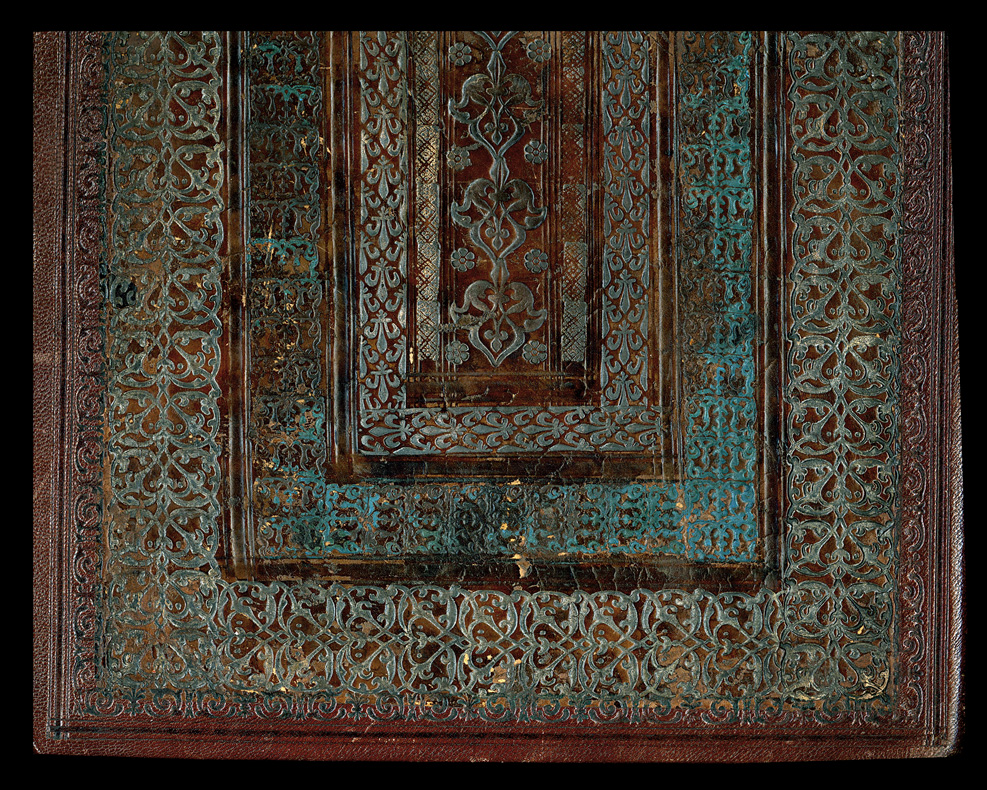
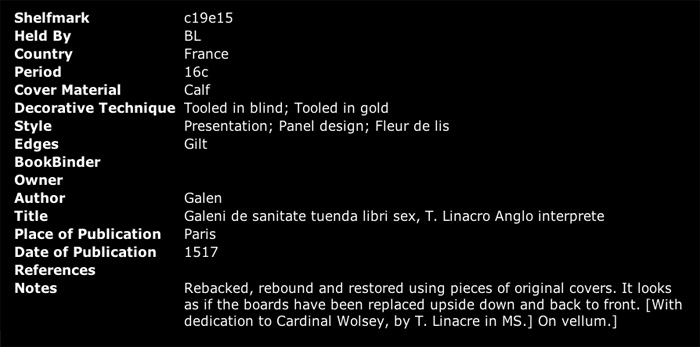
| At first I was not convinced that these bindings could be related to the Louis XII bindings there was not a single common tool, and contrary to the claims of Guignard and Nixon the linked circle tool is not identical. In Comparative Diagram 1, shown below , I have assembled the linked circle tool imprints in question, both Nixon and Guignard made elaborate theories around this tool however we can see in the enlargements that the original tool found in the atelier of Louis XII shown next to the arms of France, and the tool imprint sited by Nixon in the Linacre bindings and also in his binding No. 3 are not exactly the same and thus derive from different tools. Guignard presents (1966) a hastily made, crude rubbing of the Linacre example of this tool, and later in 1968 a fanciful illustration that must stand as the most inaccurate representation of any imprint ever recorded. Which he also claimed to be evident on the bindings Pierre Roffet, however as can be observed in our diagram, the Roffet example is yet another variation of this tool. Both Nixon and Guignard fudged their theories based on this tool. |
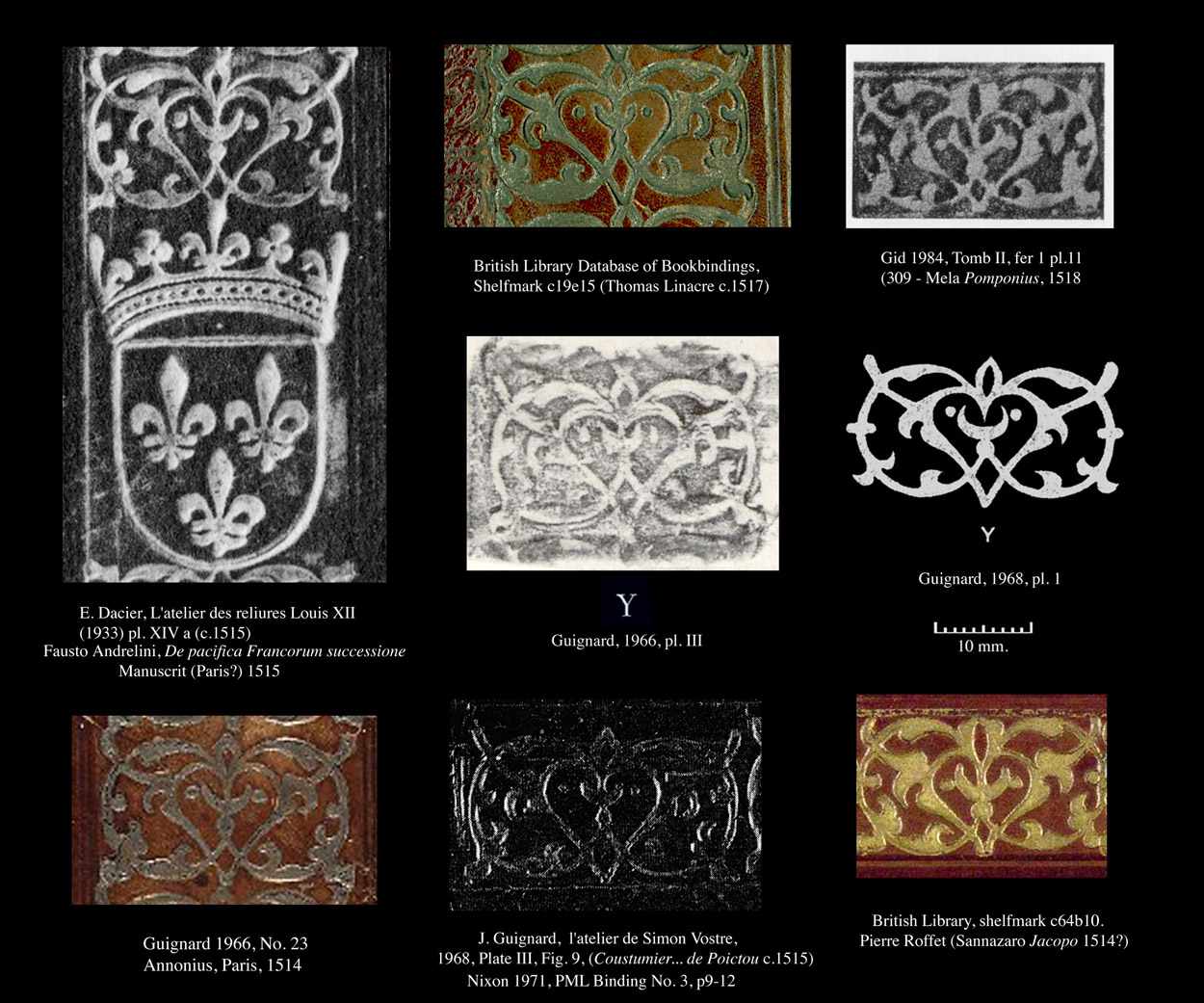
| However when I was creating the first pages of the inventory in April 2009 I could not find a reproduction of an important binding that is often cited, number 23 in the inventory, Annonius, now by good fortune a scaled reproduction is available online from the Bodleian Library Armed with this reproduction we can extract some precious rare imprint examples and measure them accurately, I show the first of these in Comparative Diagram 1 (lower left corner) this is the linked circle tool however it is the original atelier Louis XII tool and not the same as that which is found on the Linacre bindings. The common tool is one that has been named by Guignard as O2. I show it below in Comparative Diagram 2, it certainly looks like the same imprint. After intensive testing I have to admit this imprint may derive from the same tool. |
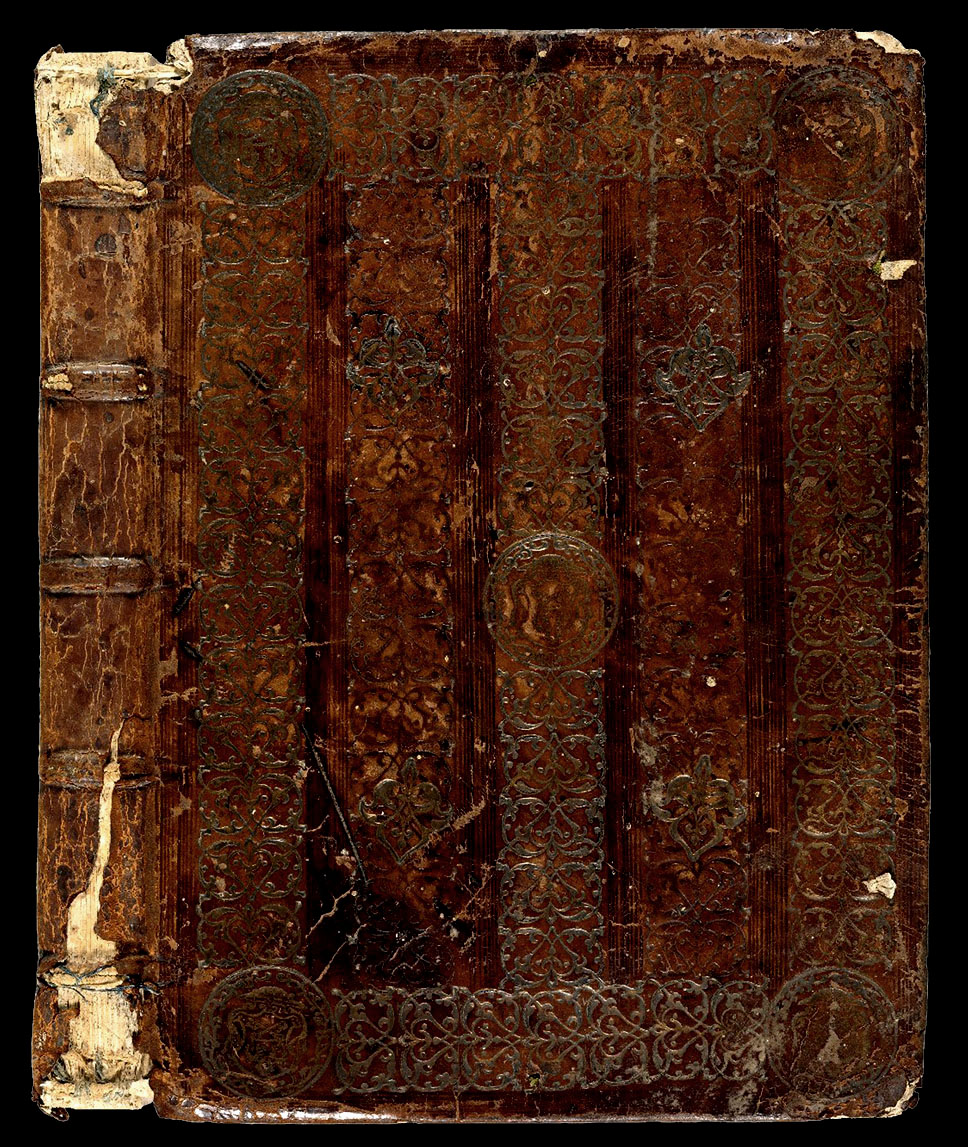

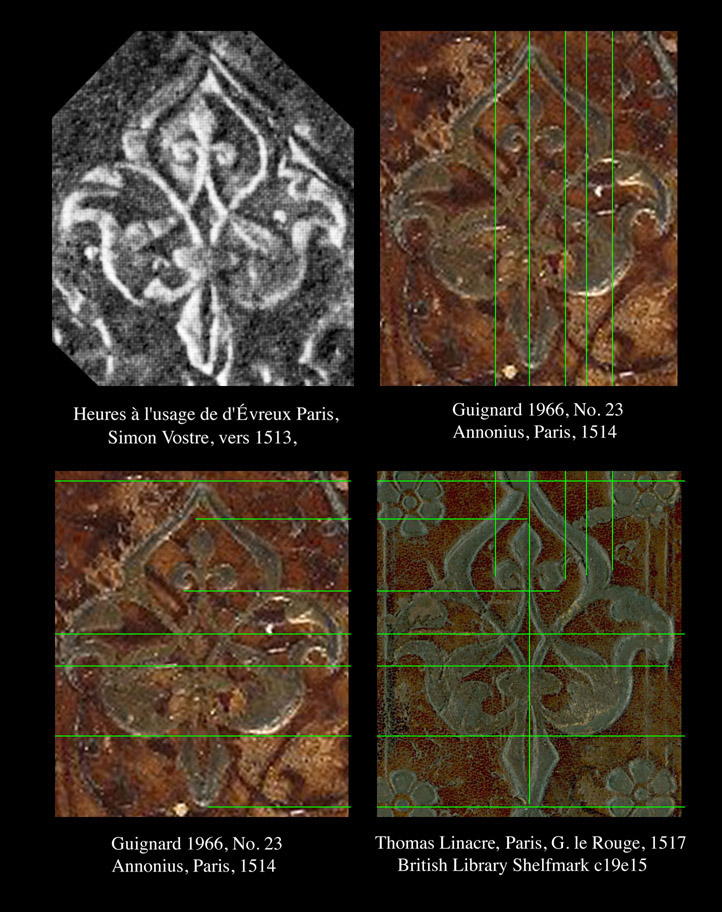
| Still a single common tool is not very convincing, then I decided to test an imprint that I had over looked for all this time the only other possible common tool, and the only one that is shown in Dacier's collection of atellier Louis XII tools, catalogued by him as 'M', the same tool has been catalogued by Denise Gid as 'fer 3". I show these imprints enlarged below along with Gid's rubbing in Comparative Diagram 3. In as much as this imprint is relatively assymetrical it is easily identified, note particularly the differences in the negative space of the lower left as opposed to the lower right, Thus it is easy to see that this is probably the same imprint that derives from a single common tool, almost certain proof of a link between these later Linacre bindings and the earlier Louis XII bindings. |
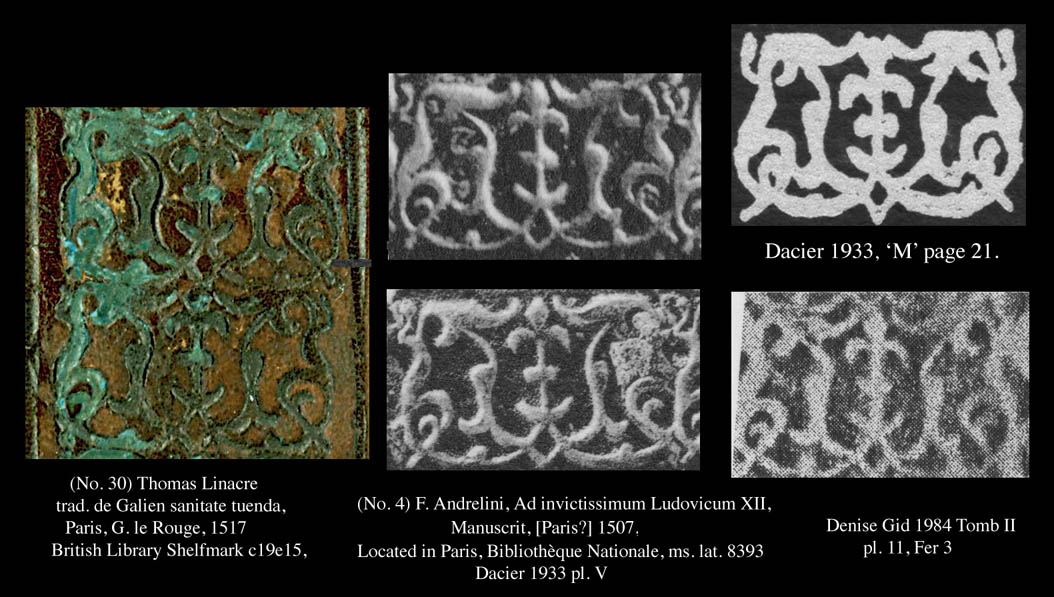
| about the author | VIRTUAL BOOKBINDING |